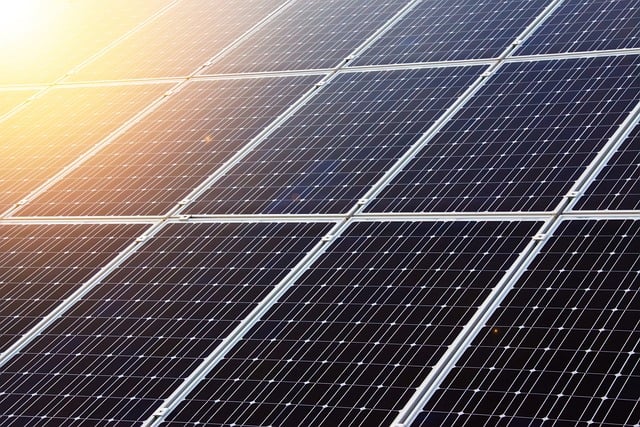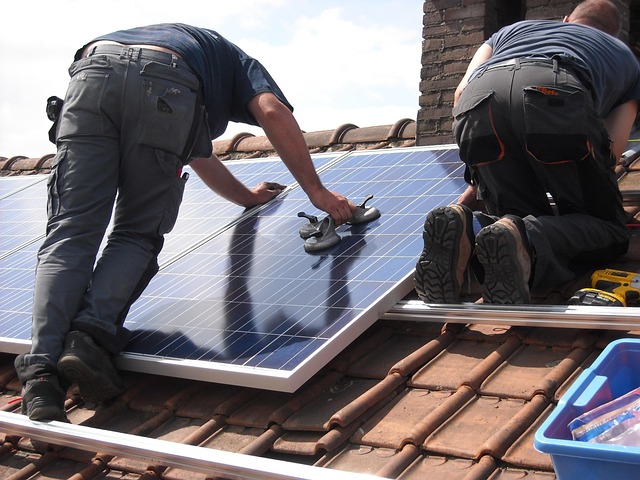Beyond the Roof: Creative Uses for Solar Panels
As the world continues to grapple with climate change and the growing demand for sustainable energy sources, solar panels have emerged as a crucial component of the green energy revolution. While traditional solar installations primarily focus on rooftops, an ever-expanding array of creative applications for solar panels is reshaping how we think about harnessing solar energy. This article explores innovative uses for solar panels that go beyond their conventional placement, highlighting their versatility in various sectors, from urban living to agriculture.
Urban Infrastructure and Design
One of the most exciting developments in solar technology is its integration into urban infrastructure. Cities are increasingly looking to solar energy to power public spaces and buildings, making urban areas more sustainable. Here are several innovative applications:
Solar-Powered Bus Shelters
Transit authorities are beginning to introduce solar panels on bus shelters, providing shaded areas for waiting commuters while simultaneously powering lighting and digital information displays. This not only enhances the user experience but also reduces electricity costs for public transport facilities.
Solar Roadways
The concept of solar roadways involves using solar panels embedded in road surfaces to generate electricity while allowing vehicles to drive over them. Although still in experimental stages, solar roadways have the potential to integrate renewable energy generation with transportation infrastructure, offering a groundbreaking solution for cities seeking to minimize their carbon footprint.
Solar-Powered Canopies and Parking Lots
Parking lots are often overlooked spaces when it comes to implementing renewable energy solutions. By installing solar canopies over parking spaces, cities can create shaded areas that not only enhance the user experience but also generate electricity for public use. These installations can power charging stations for electric vehicles and even supply energy back to the grid.
Innovations in Architecture
Architects and designers are discovering new ways to integrate solar panels seamlessly into building designs. This approach not only reduces energy costs but also enhances the aesthetic appeal of structures.
Solar Facades
Instead of traditional exterior materials, buildings can feature solar panel facades that blend functionality with aesthetics. These solar panels can harness sunlight while serving as a distinctive design element, showcasing innovation in both architecture and sustainability.
Solar Windows
Advancements in technology have led to the development of solar windows, which use photovoltaic glass to generate electricity. These windows can be incorporated into both residential and commercial buildings, allowing them to maintain natural light and views while contributing to energy generation. The potential for solar windows is immense, offering a feasible way to create net-zero buildings.
Agriculture and Farming
The agricultural sector is uniquely poised to benefit from the versatility of solar panels, particularly as farmers strive to increase productivity while reducing environmental impacts. Here are some innovative applications of solar technology in agriculture:
Solar Greenhouses
Integrating solar panels into greenhouse structures can optimize energy use for heating, cooling, and powering irrigation systems. Innovations in solar greenhouse technology not only reduce reliance on fossil fuels but also allow farmers to maintain higher yields year-round by controlling environmental conditions effectively.
Solar-Powered Irrigation Systems
Water scarcity is a critical challenge for agriculture. Solar-powered irrigation systems can harness the sun’s energy to pump water efficiently without relying on grid power or diesel fuel. This approach lowers operational costs for farmers while promoting sustainable farming practices.
Community and Social Initiatives
Community solar initiatives are gaining traction, enabling neighborhoods to collectively invest in solar technology, particularly in areas where individual solar adoption may not be feasible. These community-driven projects offer an inclusive approach to solar energy.
Solar Co-ops
Solar cooperatives allow communities to pool resources for purchasing and installing solar panels, leading to lower costs and a more significant impact. By sharing expenses, communities can benefit from cleaner energy while promoting economic growth and energy independence.
Solar-Powered Community Centers
Establishing solar-powered community centers demonstrates a commitment to sustainability while providing essential services. These centers can host programs and activities, serve as gathering places, and help educate community members about renewable energy and sustainability practices.
Transportation and Electric Vehicles
The transportation sector is undergoing a significant transition towards electrification, and solar panels play a crucial role in this transformation. From powering charging stations to integrating solar technology into electric vehicles, the possibilities are growing.
Solar Charging Stations
As electric vehicles become more mainstream, demand for charging stations continues to rise. Solar-powered charging stations can provide a clean energy source for electric vehicle owners, ensuring that EVs are charged using renewable energy. This not only reduces reliance on the grid but also enhances the overall sustainability of electric mobility.
Solar-Powered Electric Vehicles
Some car manufacturers are testing the viability of solar panels integrated into the vehicles themselves. While it may not fully power a vehicle, the incorporation of solar panels can extend driving range and reduce reliance on charging infrastructure, particularly in sunny regions. This innovation embodies the potential for combining mobility with renewable energy generation.
Remote Applications and Off-Grid Solutions
For remote communities and off-grid applications, solar panels are often a lifeline, offering solutions where traditional infrastructure is absent or cost-prohibitive.
Solar-Powered Water Purification
Access to clean water is a global challenge, especially in remote or disaster-stricken areas. Solar panels can power water purification systems, ensuring communities have access to uncontaminated water sources. These systems can be both portable and sustainable, making them ideal for humanitarian efforts.
Remote Monitoring and Communications
As connectivity becomes more vital, solar panels can power remote monitoring and communications systems for industries such as agriculture, forestry, and wildlife conservation. These systems can collect vital data and monitor environmental conditions without relying on conventional power sources.
Integration with Smart Technologies
The rise of smart technologies and the Internet of Things (IoT) presents exciting opportunities for solar panel integration. Smart devices can optimize energy use and enhance the effectiveness of solar installations.
Smart Homes
In smart homes, solar energy systems can be integrated with home automation technologies to regulate energy consumption efficiently. This integration can facilitate energy sharing throughout the home, ensuring that solar energy is utilized optimally, while reducing waste and costs.
Energy Management Systems
Advanced energy management systems can monitor energy consumption patterns and optimize solar energy use. By leveraging data analytics and machine learning, these systems can predict energy needs, optimize usage, and even suggest energy-saving steps for households and businesses.
Conclusion
The uses for solar panels extend far beyond rooftops, introducing innovative solutions that enhance sustainability across various sectors. From urban design to agriculture, community initiatives, and even transportation, solar panels offer a wealth of opportunities to create cleaner, more efficient energy systems. As technology continues to evolve, the integration of solar energy in unconventional ways presents a hopeful outlook for a sustainable future. Embracing these creative applications will not only mitigate climate change but also empower communities globally to harness the sun’s power for generations to come.





